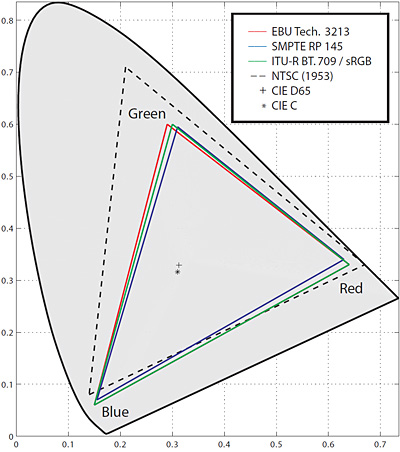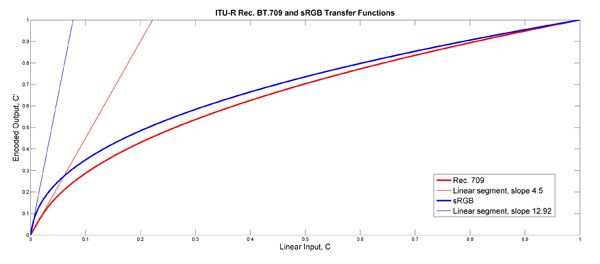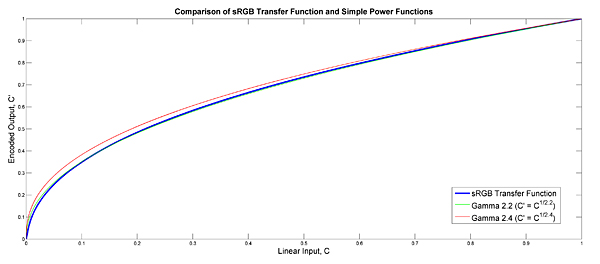If you are in a hurry or just not interested in some background information, here is the essence for you – HDTV (Rec. 709) and sRGB share the same primary chromaticities, but they have different transfer functions.
Color Space Definition
For the patient readers, let’s define the term color space first, in order to avoid confusion. The terms color model and color space are often used careless. In the following, color model refers to an abstract mathematical concept defining the axes of a coordinate system for the representation of colors. For example, the RGB color model states that a color can be defined as a linear combination of the primary red, green and blue colors, while subtractive CMY K model for color printing defines colors consisting of four primary components. Numerical representation of colors is meaningless referring to a color model without a well-defined scale. Speaking casually, it’s like telling someone, your address is 42 Market Street, but not to mention whether it is Cambridge, UK, Melbourne in Australia or San Francisco. A color space refers to a color model replenished with definitions of how the numerical values have to be interpreted. The definition of a color space implies the information about the related color model, coordinates of its primaries and scaling information, white point data and description of any non-linear transfer characteristics.
The idea behind the color spaces based on the RGB model is to simulate the detection of colors by the human eye. Physiological research has proved the existence of three different types of absorbing pigments in the different types of the cone cells in the human eye. So the idea to describe colors by three variables only, instead of dealing with their spectra, appears reasonable.
Primary Chromaticities – Red, Green and Blue
RGB primaries for video applications are defined in different standards. European Broadcasting Union introduced the chromaticities for studio monitors in EBU Tech. 3213-E (1975). For standard definition television, ITU-R BT.601 solely defines encoding parameters of digital television. It does not refer to any color space used to form component signals. Thus, it is implicit allowed to use both EBU Tech. 3213-E and ITU-R BT.709 primaries to calculate non-linear R’G’B’ data.
For high definition environment, ITU-R Recommendation BT.709 defines both encoding and color transformation coefficients. The chromaticity coordinates of the primaries are identical to those defined in sRGB standard. The white point is also D65. So far, the both color spaces seem to be identical.

RGB primaries of some video standards and sRGB
The transformation from the CIE XYZ tristimulus color space into linear (!) sRGB data can be calculated by means of a 3x3 matrix:

Transfer Function (“Gamma”)
The linear RGB data is encoded using the transfer function. And this is where the difference comes to light. The sRGB transfer function is very close to, but not identical to Rec. 709. In the following equations, C denotes the linear input color, which can be R, G or B. The output color C’ is an encoded value, transformed by the transfer function.

Both transfer functions are defined piece-wise, with a small linear part in the beginning and a main power function part. Although, the exponent in the power function of sRGB transfer function is 2.4, sRGB is often said to have a decoding gamma of 2.2. Due to the influence of the linear part of the function, the median is close to 2.2.

Similar to sRGB, the overall gamma of Rec. 709 color space is about 0.5, which results in the decoding gamma of 2.0 (1/0.5 = 2.0).

ITU -R Rec. BT.709 and sRGB transfer functions

Overall decoding gamma of sRGB is closer to 2.2 than to 2.4
bg

